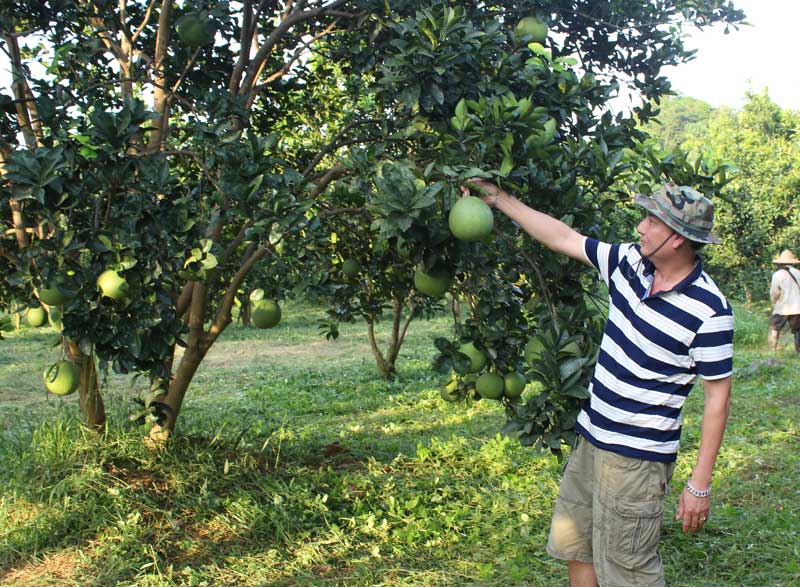



Members of Muong Dong Agricultural and Trade
Cooperative, Tu Son Commune (Kim Boi) inspecting grapefruit products before
harvesting.
The Muong Dong Cooperative was established in
September 2016 with 26 members, registered 16 production and business lines, of
which the focus was on oranges, tangerines, and other citrus. Right after the
establishment, the cooperative organized into 5 production groups, including
the members of the production area close to each other to facilitate the
support and exchange of experiences between households, and contemporaneously
help the cooperative management board send experienced members to support techniques
for groups. The cooperative has 147 hectares of citrus plants. All of them are
certified to produce food safety and are in the process of evaluating for
VietGAP certification. Of which there are 3.2 hectares certified organic
production. With the motto "Be accompany with producers - companion with
consumers", the goal of the cooperative is to build and develop a linked
chain in organizing production and consumption of food safety products, making
a mass production of safe citrus fruits with 100% of high quality, contracted
consumptions and origin- seeking availability.
Mr. Nguyen Trung Huan, Chairman of the Board
cum Director of Cooperative said: We are committed to the ultimate
responsibility for our products and constantly efforts to give consumers high
quality products named " Muong Dong citrus fruit ". In the harvesting
year of 2016 - 2017, with a business area of about 50 hectares, the Muong
Dong Cooperative introduced the first 700 tonnes of fruit with the brand"
Muong Dong citrus fruit " to the market. This is the product group that
were invested by the cooperative in a methodical manner, applying a series of
solutions: identifying the production areas located in the provincial citrus
planning; applying the VietGAP process in cultivation and gradually moving to
organic farming; the product is certified for food safety; strictly inspecting,
evaluating and accepting products by each garden, each plant; the product is
packed, clearified the origin and can be traced to each household, each breed
...
The initial success of the Muong Dong
Agricultural and Trade Cooperative has confirmed that the model of new
agricultural cooperative model is perfectly suitable with the orientation of
operation, which is developing the chains of production, oriented to clean
agriculture industry with high added value. . In addition, Phuc Linh
Agricultural and Service Cooperative (Cao Phong), Dan Chu Agricultural Service
Cooperative, Thong Nhat Agricultural Service Cooperative (Hoa Binh City), Son
Thuy Agricultural Service Cooperative (Kim Boi), Luong Son organic agricultural
cooperative (Luong Son), etc. are newly established cooperatives operating
under the Law on Cooperatives in 2012, which are operating quite effectively,
contributing actively to New Rural Development and the local socio-economic
development. As can be seen, new -type cooperative is the linking foundation
between cooperatives and enterprises to be able to compete export and
integration. The model of new agricultural cooperative has brought about effectiveness
in changing the way of thinking, the way of doing and raising the efficiency of
production, especially the promotion of joint-venture, "4 -houses"
connections, ensuring the stable output for farmers, looking towards a
sustainable agriculture.